纯种杜宾犬独特魅力:国际最新标准解读
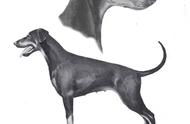
注:该标准中文版翻译自FCI国际纯种犬标准英文版,已发布于CKU新官网-犬种百科
FCI-国际纯种犬标准第 143 号
DOBERMANN
杜宾犬
ORIGIN: Germany.
起源国:德国
UTILIZATION: Companion, protection and working dog.
用途:伴侣犬、守护犬、工作犬
FCI-CLASSIFICATION:
Group 2 Pinscher and Schnauzer, Molossian type Dogs and Swiss Mountain and Cattle Dogs.
Section 1 Pinscher and Schnauzer
With working trial.
FCI分组:
第8组,宾莎犬和雪纳瑞类-獒犬,瑞士山地犬和瑞士牧牛犬组
第1类 宾莎犬及雪纳瑞犬
有工作测试。
BRIEF HISTORICAL SUMMARY: The obermann is the only German breed which bears the name of its original breeder, Friedrich Louis Dobermann (02.01.1834 – 09.06.1894). He was believed to be a tax collector, offal abattoir manager (knacker) and a part time dog catcher, legally able to catch all stray dogs. He bred with animals from this reservoir that were particularly sharp. The so called “butcher’s dogs” which were already considered a relatively pure breed at that time, played a most important role in the origination of the Dobermann breed. These dogs were an early type of Rottweiler, mixed with a type of shepherd dog that existed in “Thüringen” as a black dog with rust red markings. Mr Dobermann bred with this mixture of dogs in the Eighteen Seventies. Thus he obtained “his breed”: not only alert, but highly protective working and housedogs. They were often used as guard and police dogs. Their extensive use in police work led to the nickname “Gendarme dog”. They were used in hunting to control large vermin. In these circumstances it was a matter of course that the Dobermann was recognized officially as a Police Dog by the beginning of the 20th century.
The Dobermann breed requires a medium sized, powerful, muscular dog. Despite his substance he shall be elegant and noble, which will be evident in his bodyline. He must be exceptionally suitable as a companion, protection and working dog and also as a family dog.
历史沿革:
杜宾犬是德国唯一一种以最早的繁育者名字命名的犬种,弗里德里希•路易斯•杜宾
(1834年1月2日——1894年6月9日)。
杜宾先生曾任收税官,屠马业者及流浪狗临时管理员等职,作为流浪狗临时管理员,根据法律规定,他有权照顾所有流浪狗。凭此便利,他用所收留到的大批的犬只进行繁殖。在那时,所谓的“屠户犬”已公认为非常纯的犬种,在杜宾犬种的起源中起到了至关重要的作用。这种犬是德国罗威纳的早期原型,是与曾存在于德国“图林根”的一种有着锈红色斑点的黑色牧羊犬杂交后产生的犬种。杜宾先生于19世纪70年代利用这些犬种杂交培育了杜宾犬。因而,他得到了自己的独特“犬种”:这种犬不仅机警,而且颇具保护性,是很好的工作犬与看家犬。这种犬常被用作护卫及警犬。由于在警务中的广泛使用,这种犬获得了“宪兵犬”的绰号。这种犬还常在狩猎中使用,以对付大型的害兽。在这种情况下,杜宾犬于20世纪初成为官方正式认可的警犬。
杜宾犬,通常体形中等,强健有力,肌肉发达。除了骨质优良外,这种犬应从外形上显示优雅与高贵气质。必须特别适合做伴侣犬、守护犬、工作犬,以及看家犬。
GENERAL APPEARANCE:
The Dobermann is of medium size, strong and muscularly built. Through the elegant lines of its body, its proud stature, and its expression of determination, it conforms to the ideal picture of dog.
整体外貌:
杜宾犬体形中等,强壮,肌肉发达。身体曲线优美,拥有骄傲的姿态,表情坚定,符合理想犬种的特点。
IMPORTANT PROPORTIONS:
The body of the Dobermann appears to be almost square, particularly in males. The length of the body measured from the tip of breast to the point of the buttock shall not be more than 5% longer than the height from the withers to the ground in males, and 10% in females.
重要比例:
杜宾犬的身体似乎看起来近于正方形,对于公犬来说尤其如此。公犬肩部至臀尖的身体长度,应比肩至地面的高度大5%以内,母犬应大10%以内。
BEHAVIOUR / TEMPERAMENT:
The disposition of the Dobermann is friendly and calm; very devoted to the family. Medium temperament and medium sharpness (alertness) is desired. A medium threshold of irritation is required with a good contact to the owner. Easy to train, the Dobermann enjoys working, and shall have good working ability, courage and hardness. The particular values of self-confidence and intrepidness are required, and also adaptability and attention to fit the social environment.
行为/秉性:
杜宾犬性格友善、遇事镇静;非常忠诚于家庭,喜爱儿童。理想的杜宾犬,脾气温和、有一定的警惕性。在与饲养人关系融洽的情况下,一般不轻易发怒。这种犬易于训练,杜宾犬喜欢工作,有着良好的工作能力、勇气与毅力。这种犬自信而无畏,还能很好地适应并关注周围环境。
HEAD: 头部
CRANIAL REGION
颅部区域
CRANIAL REGION: Strong and in proportion to the body. Seen from the top the head is shaped in the form of a blunt wedge. Viewed form the front the crown line shall be almost level and not dropping off to the ears. The muzzle line extends almost straight to the top line of the skull that falls, gently rounded, into the neckline. The superciliary ridge is well developed without protruding. The forehead furrow is still visible. The occiput shall not be conspicuous. Seen from the front and the top the sides of the head must not bulge. The slight bulge between the rear of the upper jawbone and the cheekbone shall be in harmony with the total length of the head. The head muscles shall be well developed.
颅部:强健,与身体比例协调。由上面观察,头部呈钝的楔形。由前面观察,中凸线应几乎平齐,不会垂向耳部。口吻线几乎直直地延伸至头骨的背线,背线下垂,缓和地变成圆形,进入颈线。眉脊发达而不突出。前额皱纹仍然清晰可见。枕骨不能突出。由前面与上面观察,头部的两侧不得凸出。上颚骨后部与脸颊骨间的轻微凸起应与头部的总长相一致。头部肌肉很发达。
Stop : Shall be slight but visibly developed.
额段:浅,但清晰可见。
FACIAL REGION
面部区域
Nose: Nostrils well developed, more broad than round, with large openings without overall protrusion. Black – in black dogs; in brown dogs, corresponding lighter shades.
鼻:鼻孔发达,宽大于圆,开口较大,整体不突起。黑狗为黑色鼻;褐色狗为相应的较浅色鼻。
Muzzle: The muzzle must be in the right proportion with the upper head and must be strongly developed. The muzzle shall have depth. The mouth opening shall be wide, reaching to the molars. A good muzzle width must also be present on the upper and lower incisor area.
口吻:口吻必须与头部的上半部比例恰当,发达有力。口吻部应有深度。开口应宽,达到臼齿。上下切牙区域也必须有良好的口吻宽度。
Lips: They shall be tight and lie close to the jaw that will ensure a tight closure of the mouth. The pigment of the gum to be dark; in
brown dogs a corresponding lighter shade.
嘴唇:嘴唇应紧,紧贴颌部,以确保闭合紧密。齿龈应为深色;褐色狗,颜色应相对较浅些。
Jaws/Teeth: Powerful broad upper and lower jaw, scissor bite, 42 teeth correctly placed and normal size.
颌/牙齿:强健有力,上下颌宽大,剪状咬合,42颗牙齿正确排列,尺寸适中。
Eyes: Medium sized, oval and dark in colour. Lighter shades are permitted for brown dogs. Close lying eyelids. Eyelids shall be covered with hair.
眼睛:中等大小,成卵形,深色。褐色狗允许颜色稍浅。眼睑紧。眼睑应覆有毛发。
Ears: The ears, are left natural and of an appropriate size; they are set on either side at the highest point of the skull and are ideally lying close to the cheeks.
耳朵:自然,尺寸适中,两耳位于头骨最高点,紧贴脸颊为理想。
NECK: The neck must have a good length and be in proportion to the body and the head. It is dry and muscular. Its outline rises
gradually and is softly curved. Its carriage is upright and shows much nobility.
颈部:颈部长度佳,与身体和头部成比例。干燥,肌肉发达。颈部轮廓线逐渐上升,曲线柔和。姿态挺拔,显示出高贵。
BODY:
躯干:
Withers: Shall be pronounced in height and length, especially in males and thereby determine the slope of the topline from the
withers to the croup.
肩:高度与长度应明显,特别是公犬,决定了背线,从肩到臀部的坡度。
Back: Short and firm, of good width and well muscled.
背:短而紧实,宽度良好,肌肉发达。
Loin: Of good width and well muscled. The female can be slightly longer in loin because of the required space for suckling offspring.
腰: 宽度良好,肌肉发达,母犬腰部略长,因哺育后代需要空间。
Croup: It shall fall slightly, hardly perceptible from sacrum to the root of the tail, and appears well rounded, being neither straight nor noticeably sloping, of good width and well muscled.
臀:应轻微下降,骶骨至尾根不明显,显圆润,既不很直也不明显倾斜,宽度良好,肌肉发达。
Chest: Length and depth of chest must be in the right proportion to the body length. The depth with slightly arched ribs should be approximately 50% the height of the dog at the withers. The chest has got a good width with especially well developed forechest.
胸:长度与深度必须与身长成比例。略微拱起的肋骨的胸深度应大约为肩高的50%。发达的前胸宽度佳。
Underline and belly: From the bottom of the breastbone to the pelvis the underline is noticeably tucked up.
底线和下腹:胸骨底部至骨盆的下腹明显收紧。
TAIL:The tail is left natural and is ideally carried high in a slight curve.
尾:尾自然,理想的高抬,略弯曲。
LIMBS
FOREQUARTERS
四肢
前躯
General appearance :The front legs as seen from all sides are almost straight, vertical to the ground and strongly developed.
整体外观:从各个角度观察,前腿几乎直立,与地面垂直,肌肉发达。
Shoulder :The shoulder-blade lies close against the chest, and both sides of the shoulder-blade edge are well muscled and reach over the top of the thoracic vertebra, slanting as much as possible and well set
back. The angle to the horizontal is approximately 50°.
肩:肩胛骨紧靠胸部,肩胛骨边缘的两端肌肉发达,能够抵达胸椎骨的顶端,肩胛骨尽可能多的倾斜,适当地与后背相连。与水平线的角度约为50%。
Upper arm: Good length, well muscled.
上臂:长度良好,肌肉发达。
Elbow : Close in, not turned out.
肘部: 紧贴身体,不外翻。
Forearm: Strong and straight. Well muscled. Length in harmony with the whole body.
前臂:强壮笔直,肌肉发达。长度与整个身体相协调。
Carpus (Wrist): Strong.
腕骨(腕关节):强健。
Metacarpus (Pastern): Bones strong. Straight seen from the front. Seen from the side, only slightly sloping.
掌骨(系部):骨骼强健。从前面看很直,侧面看只有略微倾斜。
Forefeet: The feet are short and tight. The toes are arched towards the top (cat like). Nails short black.
前足:足部短而紧凑。脚趾向着脚尖拱起(似猫足)。趾甲短而黑。
LIMBS
HINDQUARTERS
四肢
后躯
General appearance: Seen from the rear the Dobermann looks, because of his well-developed pelvic muscles in hips and croup,
wide and rounded off. The muscles running from the pelvic towards the thigh and lower thigh result in good width development, as well as in the thigh area, in the knee joint area and at the lower thigh. The strong hind legs are straight and stand parallel.
整体外观:杜宾犬臀部有非常发达的骨盆肌肉,从后面看,背部宽而圆。肌肉由骨盆向大腿与小腿延伸,使得杜宾犬的大腿、关节处,以及小腿宽度发展良好。强健的后腿笔直,站立时平行。
Thigh: Good length and width, well muscled. Good angulation to the hip joint. Angulation to the horizontal approximately between 80°–85°.
大腿:长度与宽度良好,肌肉发达。与髋关节角度良好。与水平线的角度约在80° 至85°间。
Stifle (Knee): The knee joint is strong and is formed by the thigh and lower thigh as well as the kneecap.
后膝关节:膝关节强健,由大腿上部与下部以及膝盖骨组成。
Lower thigh : Medium length and in harmony with the total length of the hindquarter.
小腿:长度中等,与后躯的总长比例恰当。
Hock : Medium strength and parallel. The lower thigh is joined to the metatarsal at the hock joint.
跖部:力量中等,平行。大腿下部骨骼与飞节处的跖骨相连。
Metatarsus (Rear pastern): It is short and stands vertical to the ground.
后腿系部:短,与地面垂直。
Hind feet: Like the forefeet, the toes of the hind feet are short, arched and closed. Nails short, black.
后足:如前足一样,后足的脚趾短,成拱形,非常紧密。趾甲短而黑。
GAIT/MOVEMENT:
The gait is of special importance to both the working ability as well as the exterior appearance. The gait is elastic, elegant, agile, free and ground covering. The forelegs reach out as far as possible. The hindquarter gives far-reaching and necessary elastic drive. The foreleg of one side and the hind leg of the other side move forward at the same time. There should be good stability of the back, the ligaments and the joints.
步态/动态:
步态对工作能力以及外部的表现都非常重要。该犬种的步态富有弹性,优雅,敏捷,自由,能完全着地。前腿能尽量地伸展。后躯也能充分的伸展,并具有必需的弹性驱力。一侧前腿以及另一侧的后腿能同时向前迈进,背部,韧带以及关节部位有着很好的稳定性。
SKIN: The skin fits closely all over and have good pigmentation.
皮肤:皮肤紧贴身体,着色良好。
COAT
被毛
Hair: The hair is short, hard and dense. It lies tight and smooth and is equally distributed over the whole surface. Undercoat is not allowed.
毛质:
毛发短,硬而厚。紧密、圆滑、均匀地分布于全身。不接受有底毛。
Colour: The Dobermann is bred in two colour varieties: black or brown with rust red, clearly defined and clear markings (tan markings). Tan markings are on the muzzle as a spot on the cheeks and the top of the eyebrow; on the throat; two spots on the forechest; on the metacarpus, metatarsus and feet; on the inner side of the hind thigh; on the forearms and under the tail.
毛色:
杜宾犬繁殖两种颜色:黑色或褐色带铁锈红色,颜色鲜明,斑点清晰(褐色斑纹)。褐色斑纹在口吻部,脸颊、眉尖呈斑点;咽喉部;两点在前胸;掌骨、跖骨及足部;后大腿内侧;前臂,以及尾巴下面。
SIZE AND WEIGHT
尺寸和重量
Height at withers :
Males: 68 – 72 cm.Females: 63 – 68 cm.
Medium size desirable.
肩高:
公犬 68-72厘米,母犬 63-68厘米。
最好中等尺寸
Weight:
Males: about 40 – 45 kg.
Females: about 32 – 35 kg.
体重:
公犬约40-45公斤,母犬约32-35公斤。
FAULTS:
Any departure from the foregoing points should be considered a fault and the seriousness with which the fault should be regarded should be in exact proportion to its degree and its effect upon the health and welfare of the dog and on its ability to perform its traditional work.
Lack of sexual dimorphism; little substance; too light; too heavy; too leggy; weak bones.
Head too heavy, too narrow, too short, too long, too much or too little stop; Rams nose, bad slope of the top line of the skull; weak lower jaw; round or slit eyes; light eye; cheeks too heavy; loose flews; eyes too open or too deep set; ear set too high or too low; open mouth angle.
Back not straight; sway back; roach back; insufficient depth or width of chest; tail set too low; sloping croup; too little or too much tuck up.
Too little angulation in forequarters; hindquarters with too little or too much angulation; loose elbow; feet too close together or too wide apart; cow-hocks, spread hocks; open or soft paws, crooked toes; pale nails.
Tan-markings too light or not sharply defined; smudged markings; mask too dark; big black spot on the legs; chest markings hardly visible or too large; hair long, soft, curly or dull. Thin coat; bald patches.
Deviation of size up to 2 cm from the standard should result in a lowering of the quality grading.
Gait that is not harmonious, in particular pacing.
缺陷:任何与上述各点的背离均视为缺陷,缺陷的严重程度与缺陷的程度大小及此缺陷对犬只的健康、福利和执行传统工作的能力造成的影响成正比。
缺乏性别特征;骨量较少;体重太轻;体重太重;腿太长;骨骼无力。
头太重,太窄,太短,太长,额段太深或太浅;高鼻梁,头骨线条倾斜度不当;下颌弱;圆或眯缝眼;眼睛颜色浅;脸颊太厚;嘴唇太松弛;眼睛过度张开或过于深陷;耳朵太高或太低;口部角度过大。
背不直;背松垮;弓背;胸部深度或宽度不够;尾位过低;臀部倾斜;腹部收缩太多或太少。
前躯角度太小;后躯角度太大或太小;肘部松弛;足太紧凑或距离太远;牛腿跗关节,跗关节外扩;足爪张开或软,脚趾弯曲;趾甲色浅。
褐色斑点太浅,或不清晰;斑点模糊不清;面部颜色太深;腿上有大的黑色斑点;胸部斑点几乎看不见或太大;毛发长、软、卷曲或者无光泽。被毛太薄;有部分秃毛。
尺寸偏离标准两公分以内,应降低质量评分。
步态不和谐,尤指踱步。
DISQUALIFYING FAULTS:
Aggressive or overly shy dogs.
Any dog clearly showing physical of behavioural abnormalities shall be disqualified.
Yellow eyes (bird of prey eye); different coloured eyes.
Overshot; level bite; undershot; missing teeth according to the formula.
White spots. Visible undercoat.
Dogs which deviate more than 2 cm over or under the standard.
失格缺陷:
有攻击性或过度羞怯
任何犬只明显表现出体力上或行为上的异常,都应被判定为失格。
黄眼(猛禽眼);两眼颜色不同。
上颚突出;水平咬合;下颚突出;缺牙。
白色斑点;底毛可见。
偏离标准上下两公分以上。
N.B.:
Male animals should have two apparently normal testicles fullydescended into the scrotum.
Only functionally and clinically healthy dogs, with breed typicalconformation, should be used for breeding.
注:
公犬具备两个明显正常且完全置于阴囊的睾丸
只有身体机能以及临床表现健康的,具备典型犬种结构的犬只,才可用于繁殖。
▲ 犬只各部位名称(FCI标准通用)


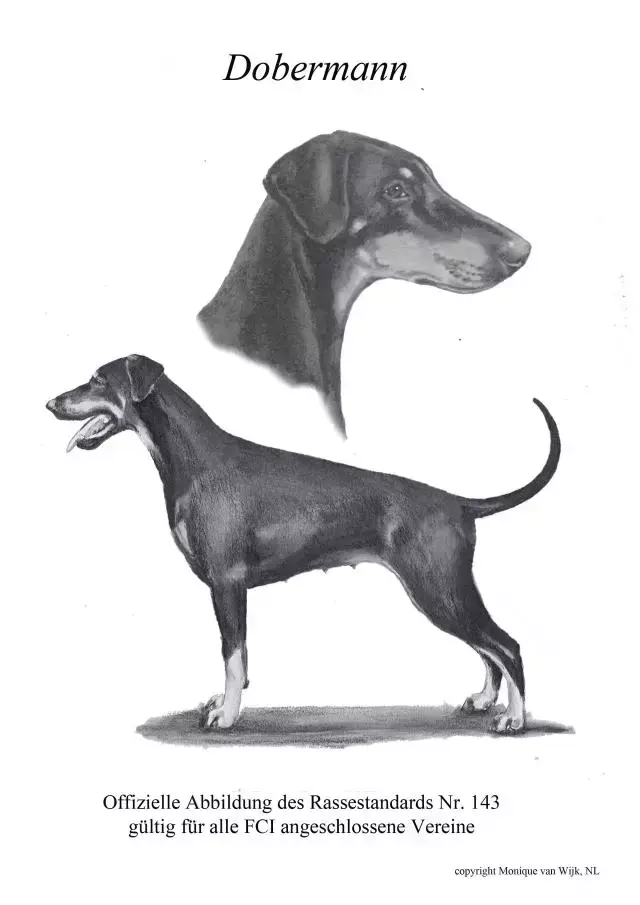
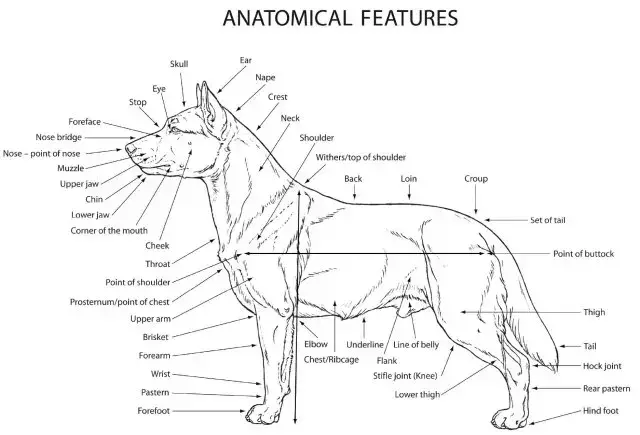

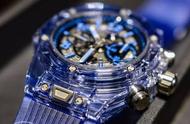















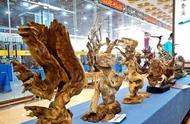

 鲁公网安备37020202370211号
鲁公网安备37020202370211号